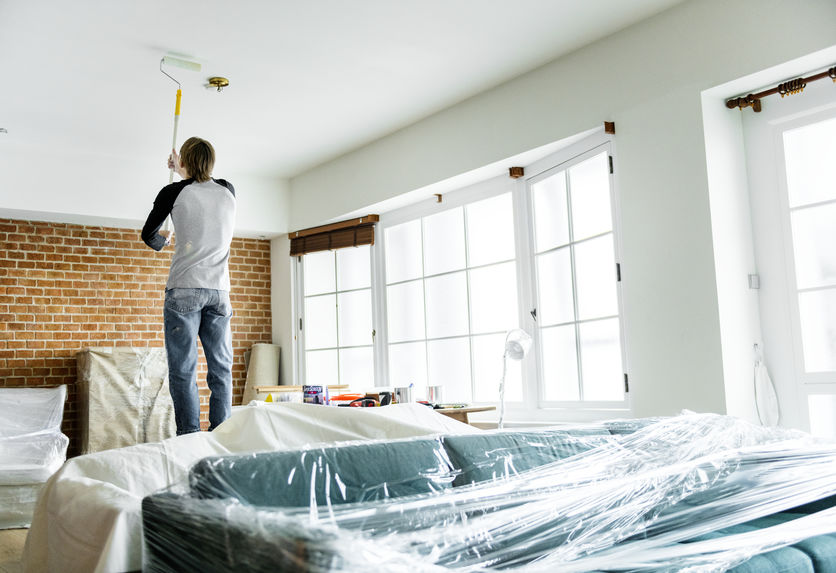In our last blog post, we discussed the value of painting your ceiling and how it can be used to update your space. But how are you supposed to go about actually painting your ceiling? Many homeowners mistakenly believing that painting a ceiling is a lot like painting a wall, but this couldn’t be further from the truth. While your ceiling is, in a way, just one more wall, it requires different paint, colors, and techniques that the other four walls don’t. As such, it can be difficult for homeowners to know how to get started with painting their ceiling. That’s why we’ve put together the definitive guide on painting ceilings to help you redecorate your home with ease:
Ceiling paint
The paint that you buy for your ceiling will be different from the paint you buy for your walls in more ways than one. Your ceiling paint should be a different color from the rest of your walls, but it should also be a different texture. More specifically, you should avoid glossy finishes as these are highly reflective and are only suited for trims and doors. Flat finishes, meanwhile, can cover up blemishes and won’t detract from the rest of the room’s design.
White vs. Colored ceilings
Most homes have white ceilings, but this doesn’t always have to be the case. A colored ceiling can liven up a space by acting as an accent wall. The choice you make will depend on how light comes into your room. Darker rooms that don’t receive much natural light should have white ceilings to brighten it up, but brighter rooms who do receive much natural light can benefit from a darker ceiling.
Your tools
The tools you use to paint your ceiling won’t be much different from those you use to paint your walls. A roller brush will allow you to reach higher areas such as your ceiling, while a small brush can get along the edges of your ceiling and walls. However, some homeowners use spray paint to paint their ceilings. While this can seem easier to do, it often wastes more paint and forces you to buy additional equipment. In these instances, it’s better to use your normal painting tools or to hire a professional painter to do the work for you.
Prepping your space
Your ceiling should be the very first wall that you paint. This is because painting your ceilings is often messier and more time-consuming, meaning that you could mess up your newly painted walls if you paint them prior to your ceiling. When you get to work on your ceiling, then, you should prepare the space around it accordingly:
- – Move out any furniture or items that you can. If you can’t move out some items, place them in the center of your room.
- – Cover any remaining furniture with plastic tarps to protect them from paint
- – Spread out a canvas drop cloth to protect your floors from splatter. Get one with a rubber backing so that it’s nonslip.
Painting your ceiling
Now that you’re properly prepared, it’s time to paint your ceiling. When applying your paint, there are two main techniques you can use: perpendicular strokes and “W” strokes. Perpendicular strokes are where you first roll your brush parallel with the wall, and then roll back across the area you just painted in a perpendicular direction. You will essentially be making a big cross. “W” strokes, meanwhile, are where you create a “W” on your ceiling horizontally and then go back over it vertically. Either method will work to prevent roller marks on your ceiling.
If you’re looking to paint your ceiling, walls, or your entire home, then feel free to give Richard Stewart Painting a call today to get us started on your next project.





Recent Comments